















Big Chute
Ontario
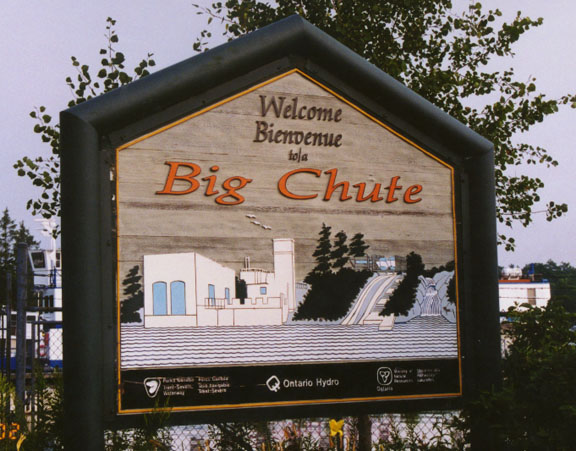
the place
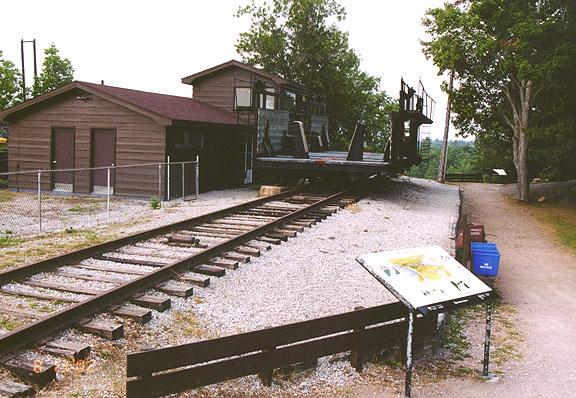
old marine railroad
That “temporary” marine railway is still
operational, handling overflow of smaller craft during the busy season.
The new marine railway was built in 1977. Similar in principle
to the older model, boats are floated onto a partly submerged carriage, and
then carried overland to be floated gently on their way.
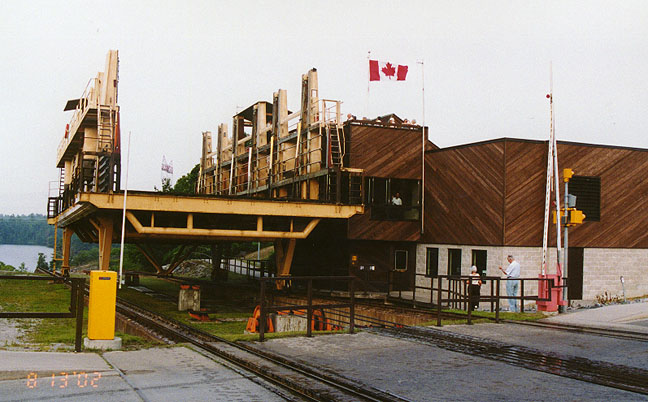
new marine railroad
Unlike the old railway, a double track keeps the new carriage
level at all times. A system of slings and inflation devices hold the boats
securely in place.
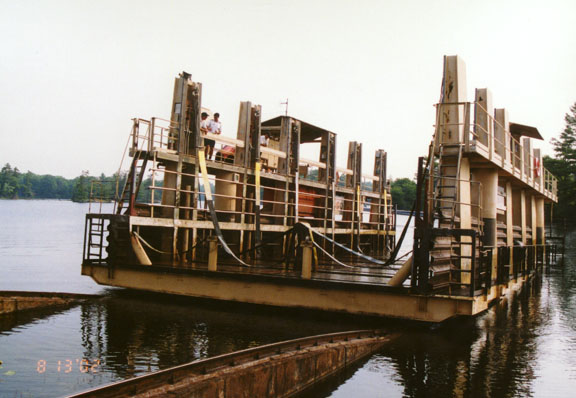
note the multiple slings
Although a conventional lock would have been
simpler, the marine railway was elected to prevent the possible migration of
sea lamprey from Georgian Bay into the Trent-Severn system.
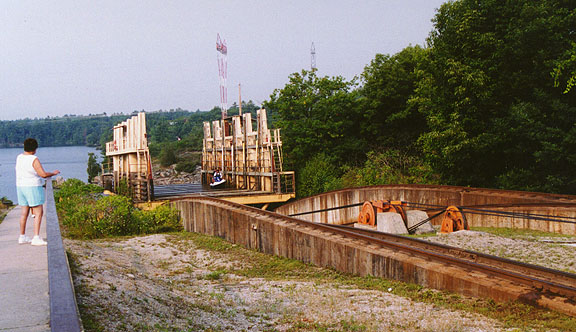
operating to bring jet boat to the higher lake
In addition to the Sea Lamprey, another foreign species in the Waterway
is the Zebra mussel. Zebra mussels are tiny striped shellfish that made their
first Canadian appearance in Lake St.Clair in 1988. They are thought to have
been brought to North America from Europe in 1988, via bilge water dumped by
an ocean freighter in the Great Lakes.
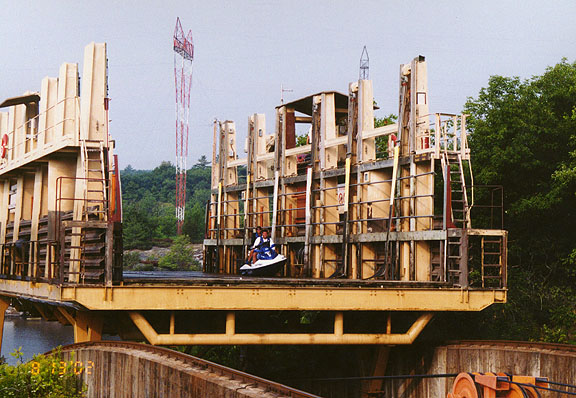
jet boat high and dry
Zebra mussels live in large colonies, attaching to hard
surfaces such as rocks, hulls, buoys, docks, and water intake pipes. (not the
Kawartha Voyageur — the hull is
painted with a special anti-fouling paint that includes hot pepper to deter
the mussels from sticking!) They have very sharp edged shells, and make
beaches unfit for swimming. They also disrupt the aquatic ecosystem by eating
the microscopic plants (phytoplankton) and animals (zooplankton), which, in
turn, are food for larger animals such as young fish; therefore negatively
impacting fish populations.
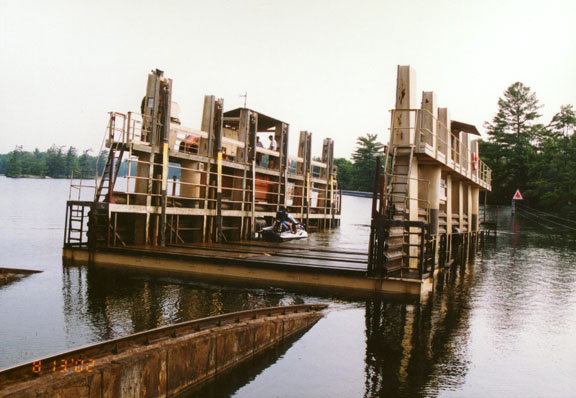
jet boat leaving marine railroad
On the positive side, these mussels filter suspended materials
from the water, improving its clarity, and are also a food source for some
birds.
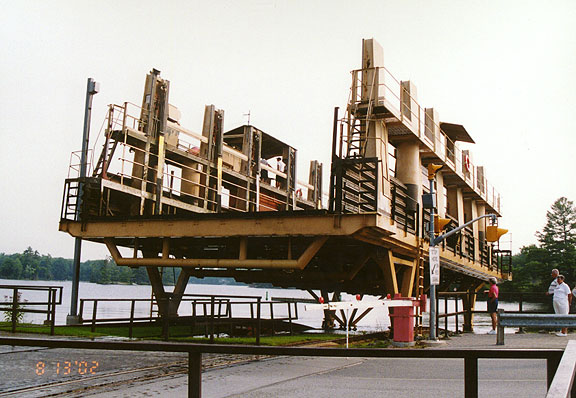
structure as it crosses the auto roadway
The power plant here at the Chute began operations in 1911. It
was owned by the Simcoe Railway and Power Company and supplied hydroelectric
power for the towns of Midland, Penetanguishene, Victoria Harbor, Port
McNichofl, Coidwater, Barrie and Orillia. The plant was particularly worthy of
note at the time as being the largest hydraulic source of power in the central
district, and was destined to serve a radius of 75 miles (121km).
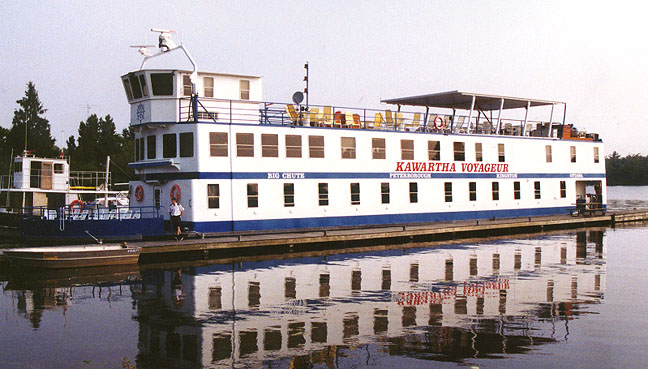
the Kawartha Voyageur, docked up water at Big Chute
(at 175 tons, is too long and heavy for the big chute marine railroad)
so we board here to head South on the Trent - Severn Waterway
This plant was to play an important role in the development of
public control, as it was the first
plant to be purchased by the newly formed Hydro Commission, in 1914, which
became Ontario Hydro, and is now Ontario Power Generation.
Text by Ontario Waterway Cruises

Canada flag

Return to Trent - Severn Waterway page
Return to Recent Adventures page



























Return to Canada page



















People and Places













![]()
![]()
![]()